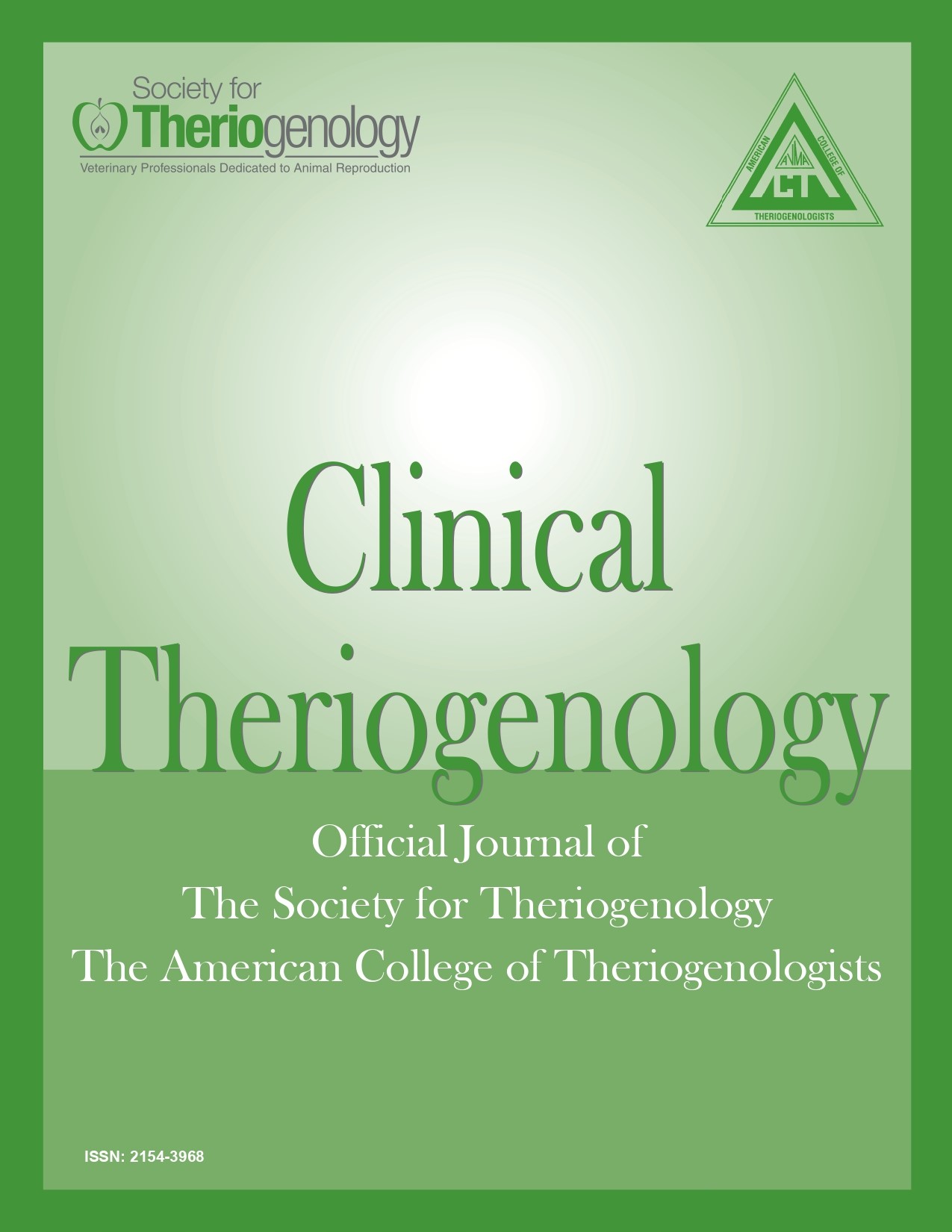Hermaphroditism in a Miniature Schnauzer
Abstract
A nine-year-old male Miniature Schnauzer was examined because of a one month history of progressive abdominal distention and lethargy. The patient presented with gynecomastia and neither testicle was identified within the scrotum. Abdominal radiographs and abdominal ultrasonography revealed bilateral gonadal masses and an enlarged and elongated fluid-filled uterus with echogenic contents, consistent with pyometra. Gonadohysterectomy and histopathology were consistent with true hermaphroditism, with the abdomen containing one right testicle with an associated Sertoli cell tumor and contralaterally a left ovary with a granulosa cell tumor. The dog recovered from surgery without complications. There appears to be no association between true hermaphroditism and persistent Mullerian duct syndrome, a common inherited disorder in the Miniature Schnauzer breed, where the Mullerian ducts fail to regress after testicular development. Cryptorchidism is an important clinical problem and affected animals and/or carriers of this genetic defect should not be used for breeding. Either persistent Mullerian duct syndrome or true hermaphroditism should be considered as a cause for cryptorchidism in the Miniature Schnauzer breed.
Downloads

This work is licensed under a Creative Commons Attribution-NonCommercial 4.0 International License.
Authors retain copyright of their work, with first publication rights granted to Clinical Theriogenology. Read more about copyright and licensing here.





